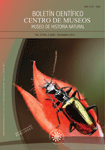Authors
Abstract
A detailed analysis of the variations in vegetation coating and the mirror still water swamp El LLanito in the area of the micro-basin El Llanito located in the municipality of Barrancabermeja (Santander) is presented. A comparative study of vegetation and land use supported on traditional optical sensors and field verification was carried out between the 1960s and 1990s. Based on IGAC (2000), methodology, eight types of vegetation coating, five types of uses of soil, and four types of water coating were identified. Each type of coating was geo-referenced and transferred to 1:25000 scale thematic maps, and then organized into a Geographic Information System (GIS). The following impact indicators were obtained: deforestation of 4635.26 natural forest hectares, , increase of 663.83 hectares of secondary forest, increase of 1639.09 hectares of improved pastures, and 318.05 hectares extension of the mirror still water swamp El Llanito. The results indicate that the original ecosystem has been split due to processes of selective logging, colonization, and increased livestock holdings.
Keywords
References
CHINEA, J.D., 2002. Teledetección de bosques tropicales (en) GUARIGUATA, M.R., KATTAN, G.H. (eds.) Ecología de bosques neotropicales. Editorial Tecnológica, Cartago, Costa Rica.
HELMER, E.H., RAMOS, O., LÓPEZ, T., QUIÑONES, M. & DÍAZ, W., 2002. Mapping the Forest Type and Land Cover of Puerto Rico, a Component of the Caribbean Biodiversity Hotspot. Caribbean Journal of Science, 38 (3-4): 165-183.
HOLDRIDGE, L.R., 1977. Ecología basada en zonas de vida. Trad. H. Jiménez Saa. IICA, San José, CR. 216p.
INSTITUTO DE HIDROLOGÍA, METEOROLOGÍA Y ESTUDIOS AMBIENTALES –IDEAM–., 2002. Informe presentado a la Contraloría General de la República para elaborar el informe al Congreso sobre el estado de los recursos naturales y el ambiente. p. 12.
INSTITUTO GEOGRÁFICO AGUSTÍN CODAZZI –IGAC–., 1979. PRORADAM: Proyecto Radargramétrico del Amazonas. República de Colombia, Bogotá. 590p.
________., 2000. Levantamiento de cobertura terrestre y uso de la tierra. Instituto Geográfico Agustín Codazzi (IGAC). 25p.
________., 2003. Estudio general de suelos y zonificación de tierras. Departamento de Santander. Instituto Geográfico Agustín Codazzi (IGAC). Versión electrónica.
JENSEN, J.R., 1996. Introductory digital image processing: a remote sensing perspective. Prentice Hall, USA. 120p.

 PDF (Español)
PDF (Español)
 FLIP
FLIP


















